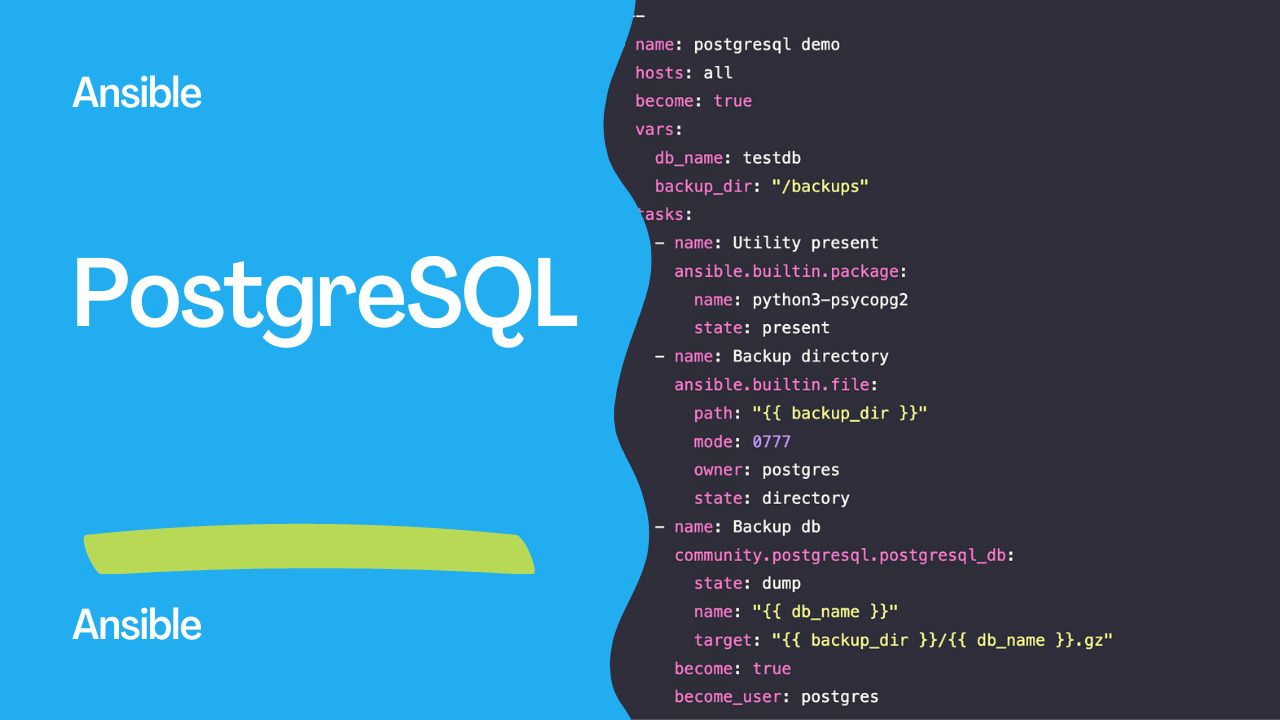Introduction
Automating your database (PostgreSQL) with Ansible enables you to achieve Infrastructure as Code (IaC). Using IaC, you’re going to be able to automate your workflow, your CI/CD pipelines, for example, and be faster in addressing your critical business demands.
Beginners
Ansible provides various modules to manage PostgreSQL databases, including backup, restore, user provisioning, and more. I’ll show you step-by-step how to prepare your Ansible controller to interact with the PostgreSQL infrastructure. This initial configuration is sometimes a roadblock for some PostgreSQL users starting with Ansible.
Installation
- Install PostgreSQL in Debian-like systems - Ansible modules apt, stat, shell, service
- Install PostgreSQL in RedHat-like systems - Ansible modules yum, stat, shell, service
Usage
Backup and Restore
- Backup a PostgreSQL Database - Ansible module postgresql_db
- Restore a PostgreSQL Database - Ansible module postgresql_db
Database Management
- Create a PostgreSQL Database - Ansible module postgresql_db
- Drop a PostgreSQL Database - Ansible module postgresql_db
- Rename a PostgreSQL Database - Ansible module postgresql_db
Access/User Management
- Create a PostgreSQL User or Role - Ansible module postgresql_user
- Allow md5 Connection for a PostgreSQL User or Role - Ansible module postgresql_pg_hba
- Grant Privileges to User or Role on PostgreSQL Database - Ansible module postgresql_privs
The Best Resources For Ansible For PostgreSQL By Examples
Video Course
eBook
Conclusion
Now you know how to automate your PostgreSQL database using Ansible Automation technology. Subscribe to the YouTube channel, Medium, and Website, X (formerly Twitter) to not miss the next episode of the Ansible Pilot.
Academy
Learn the Ansible automation technology with some real-life examples in my
Udemy 300+ Lessons Video Course.

My book Ansible By Examples: 200+ Automation Examples For Linux and PostgreSQL System Administrator and DevOps

Donate
Want to keep this project going? Please donate
